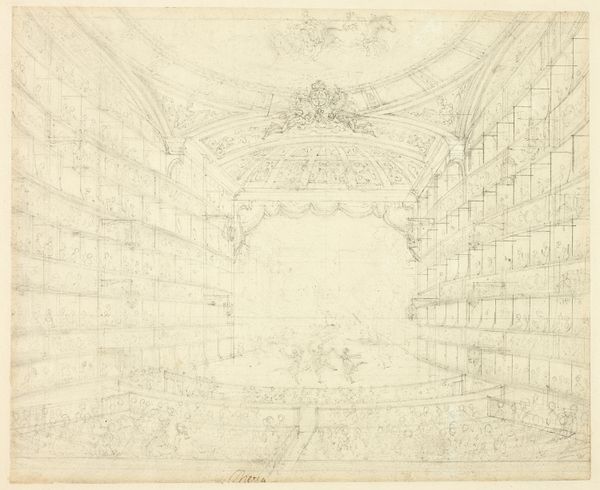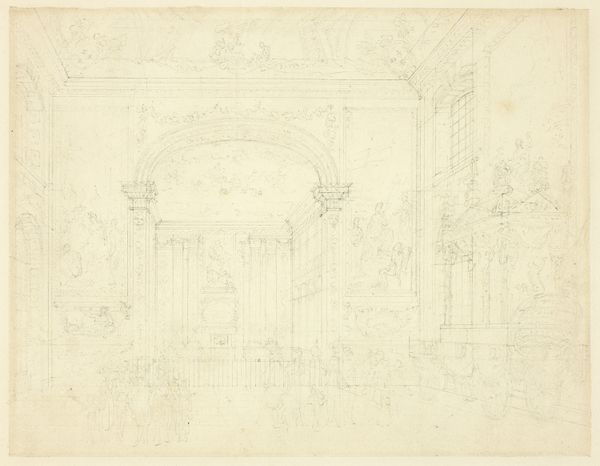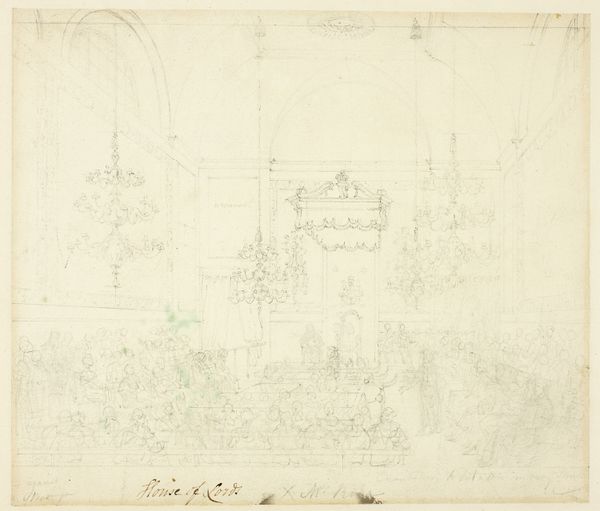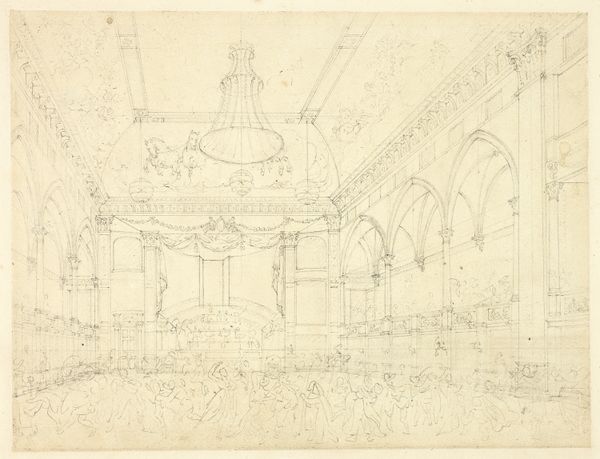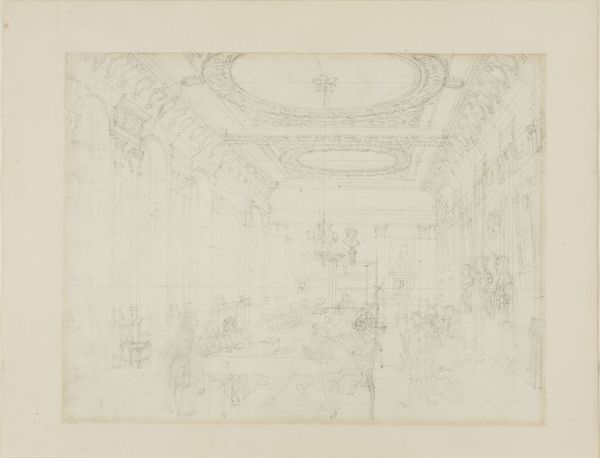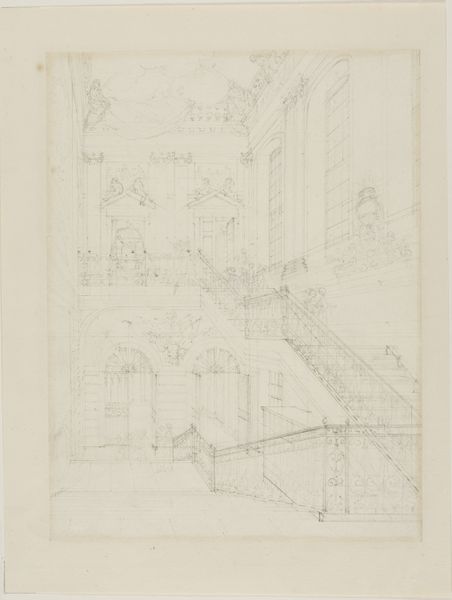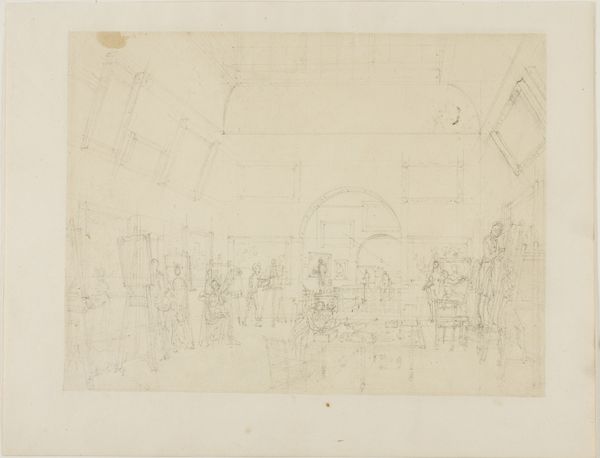
Study for St. Martin's in the Fields, from Microcosm of London c. 1809
0:00
0:00
drawing, print, paper, pencil, graphite, architecture
#
drawing
# print
#
perspective
#
paper
#
pencil
#
graphite
#
cityscape
#
history-painting
#
architecture
Dimensions: 198 × 264 mm
Copyright: Public Domain
Editor: This drawing, "Study for St. Martin's in the Fields," by Augustus Charles Pugin, dating to around 1809, uses graphite and pencil on paper. The architectural detail is fascinating, but it almost feels skeletal in its unfinished state. What strikes you about this piece? Curator: I’m interested in the labor embedded in this preparatory sketch. The graphite and pencil weren’t simply means of artistic expression but commodities, industrially produced and distributed. How does understanding this as a “study” for a larger project change our view? Consider the economics of printmaking in early 19th century London – who was consuming these images and why? Editor: I hadn’t really thought about the paper and pencils as industrial products feeding into the art itself! The print aspect also adds another layer. Do you see a specific intended audience influencing Pugin’s choices in this study? Curator: Absolutely. The "Microcosm of London," the larger publication this study informed, aimed to showcase London's modernity, consumption and class relations. Pugin and Rowlandson literally depict various forms of labour in the architecture, alongside scenes of daily life. These details would be particularly relevant to those invested in the commercial life of the city, who were members of elite society and wealthy investors. Were these prints simply consumed for aesthetic value, or as propaganda, legitimizing economic and social structures? Editor: So the "unfinished" quality I perceived could actually be highlighting the process, and hinting at these industrial and social dynamics in London at the time. That changes my entire perception. Curator: Precisely! And remember that materiality also encompasses the lived experience of making art. Pencil dust, the feel of paper – Pugin's labour is imprinted in this object. By examining this work from the viewpoint of material conditions, we can gain a deeper understanding of early 19th-century society. Editor: I'm walking away with a new appreciation for the layers beneath what I initially considered just an architectural drawing. It’s a window into the economy of art production itself. Curator: And hopefully, it inspires you to consider art and all images as deeply implicated in systems of production and power.
Comments
No comments
Be the first to comment and join the conversation on the ultimate creative platform.

